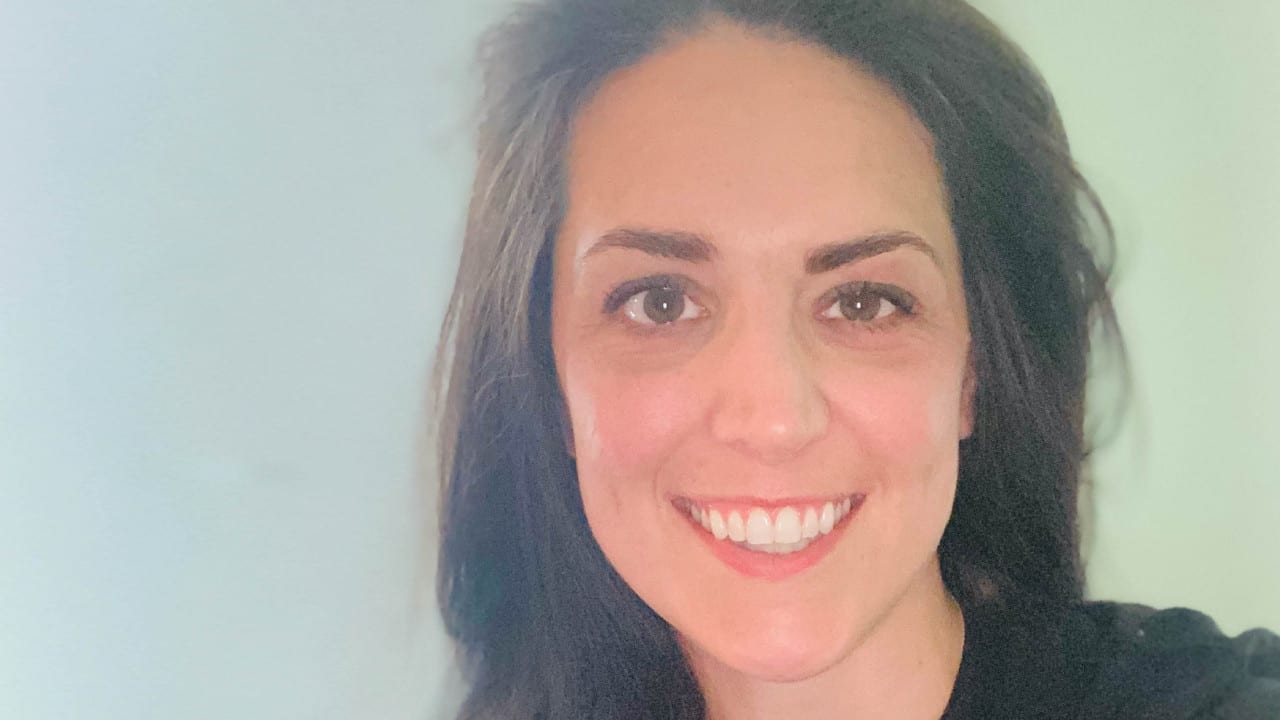Diversity, talent attraction, and the Pittsburgh Passport
Pittsburgh is revolutionising their talent attraction strategy – and having the hard conversations about racism and inequality. Alison Treaster, Senior Director of Talent, at the Allegheny Conference on Community Development, shared how the Pittsburgh Passport – the organization’s signature talent retention program aimed at college students and recent grads – is connecting to talented individuals around the world and helping the region move towards a more equitable future.
Where to start, Alison! The Pittsburgh Passport is a fantastic initiative, and we have lots that we’re interested in asking you about, but to start with, could you give our readers some background into the programme?
I guess I should start by saying that we’re an economic and community development organization, that’s tasked with improving the overall economy and quality of life in southwestern Pennsylvania; Pittsburgh is the central city in that area. What we were hearing from our employers was that workforce and talent were their biggest pain points. We had a lot of baby boomers retiring, smaller classes coming through our K-12 system, and we were losing college talent. We graduate about 40,000 college students every year from our universities, and about half of them were going for opportunities elsewhere after graduation. So part of our talent strategy for the region – and where the Passport came from – was how do we increase that percentage of students staying in the region.
We found through focus groups and surveys that the reason that many of them were leaving was because they didn’t know what Pittsburgh had to offer, both from an employment and a quality of life perspective.
The Passport was launched in 2019, and it was really about getting students out and about around the city. We did a kick-off at Heinz Field which is where the NFL Pittsburgh Steelers play, and we had about a thousand people there, which gave us the opportunity to welcome them with a backdrop to the city and the three rivers, to connect them with each other, to connect them to employers, and to say “spend your summer with us.” We had museum nights at the Andy Warhol museum for college students, we did whiskey tastings, music opportunities – lots of things from a social perspective because we found that when students felt connected to each other and connected to a network outside of school and work that that was a significant indicator of whether or not they wanted to stay somewhere.
And then we did a series of professional development sessions and open houses at companies. They could go and meet staff – particularly young professionals, but also the leadership to hear what’s the culture of a company? What’s it like to be an entry level staff member? They really got to experience face to face engagement, so they had someone to follow up with about an internship or about a full-time opportunity. They weren’t just another resume in a stack that never got feedback – they actually connected with real people.
I think what makes this programme unique is that this was employers collectively coming together to collaborate for talent rather than compete for talent. We had multiple banks, we had multiple health care companies, we had multiple companies in autonomous vehicles, all saying that it’s better for us to work together to keep talent in the region. It’s really this unique collaboration that you’re not going to see in other markets.
The obvious big question has to be about the pandemic which has been a hugely disruptive force this year. You mentioned that you launched physically last year, but how have you adapted your strategy to keep up your momentum despite the challenges of COVID-19?
Up until March 17th when everything shut down, we had planned on doing everything in person again. We had 1500 students participating in the first year, and as we were moving in to March, we knew that we needed to pivot this to virtual because we recognised that a lot of internships were being cancelled or significantly truncated. Students were losing the opportunity not just to gain skills and gain access to employers, but to have significant projects to put on to their resumes. They were missing a whole summer’s worth of experience.
We had to keep moving forwards with the Passport to meet this need, but we could also open it up more broadly. In the first year, it was all interns we focussed on – you had to have an internship to participate in the programme. This year with the virtual platform, it was more accessible. We had students joining from other countries, from lots of other different markets and without any connection to Pittsburgh, but who had a friend who recommended the Passport to them. We had students who previously hadn’t thought about Pittsburgh at all, who were now learning about the city and connecting with employers. And hopefully they’ll ultimately move here and find opportunities.
 Wigle whiskey tasting in 2019 Wigle whiskey tasting in 2019 |  Zoom group for the Passport in 2020 Zoom group for the Passport in 2020 |
In 2020, we had just over 1700 students participate. What’s unique is that there’s so much online programming available right now, so the fact that there were this many students willing to engage and participate meant that we had something that was valuable to them and that they at least had a baseline interest in Pittsburgh and what we have to offer.
From an exposure perspective, we took the opportunity to showcase the best that the region has to offer. We had an entire tech talk series this year – Bosch and Argo AI (which is one of the five autonomous vehicle companies here) sponsored that – to talk about some of the cutting edge things that are happening, not only in autonomous vehicles, but in robotics. And also, what it’s like to be entry level tech talent.
From a cultural perspective – and with more limited capabilities since we couldn’t showcase restaurants or live theatre or sports – we did a virtual cooking series with local chefs talking about their missions, doing live demo cooking demonstrations to give people a little taste of the region from their kitchens.
And we did a series of 24 virtual events, many with hiring managers so students had the ability to connect. These hiring managers were very forthcoming with asking student to connect on LinkedIn to be able to talk about opportunities and what companies have to offer, which was fantastic.
It’s amazing that you’ve been able to continue to share your city values in this way.
One thing we learned from the feedback in the first year is that of the 1500 students who participated, 32% were students of colour. The second year, 46% of the participants were students of colour. We’re not the most diverse region, and we wanted to prioritise that because we want to ensure that we’re an inclusive, equitable community and that people feel comfortable and welcomed here. One event we added this year that we got really positive feedback on was a partnership with Vibrant Pittsburgh, which is a local non-profit that focusses on welcoming and connecting people of colour and diverse candidates to opportunities, to mentorship, to programming, and helping them really settle in here.
We held an event where we had professionals from multiple organisations come in and have candid conversations about what it’s like to be Black, Latinx, LGBTQ, Asian, or a veteran in Pittsburgh. It wasn’t recorded – they had private breakout rooms, and it was an opportunity to really speak about what it is like to be here. We’re planning to do some of those sessions into the fall and next spring as well, as a way to break down barriers and recognise that it’s a challenging time in a lot of places for a lot of reasons. However, candid conversations and continuous learning can be valuable.
The Passport directly addressed some of the most pressing issues facing Black, indigenous and people of colour in Pittsburgh right now. Clearly this is helping you to attract diverse talent, but are these conversations helping the city to tackle these challenges?
We – and many other areas – still have a long way to go. What we want to promote is that we’re having those hard conversations, and that we’re taking steps to address problems that we see in the region. We want to start moving forward.
One thing that we did that was new for 2020 was to launch a Case Competition, which was partly due to the fact that we knew many students were losing their internships, and we wanted to provide something that was a bit more concrete in terms of skill building and something that students could put on their resumes.
We said, “why not give them an opportunity to address some of the biggest issues of today?” The three areas that they could focus on were in social justice and anti-racism, going back to school safely, and – selfishly for us! – how we can better welcome new people to Pittsburgh.
Students had one week to compete. They could form teams to compete for a $30,000 to share and also for the opportunity to present in front of an executive panel and to participate in a private networking event with hiring managers.
I think what was so fascinating is that two of our winning teams met through our LinkedIn group. They’ve never met each other in person, they go to schools in different states, and in one week’s time, in the midst of everything, they pulled together professional-grade solutions for some of the most challenging issues that we see right now.
Did you have a particular favourite? Was there one solution that you just loved?
All three of the winners were amazing – to be honest, all of the cases were. What they pulled together in such a short amount of time, virtually and in many cases in total siloes of knowing each other, is something I don’t think I could have done to that level of professionalism as a college student.
But the social justice and anti-racism case for me was so fantastic because I learned something completely new. It was all around ‘performative allyship,’ which was a new term to me when it was first presented. For example, putting up a black square on your social media as a company and saying that Black lives matter isn’t enough to actually say you’re taking steps to be a less racist company. Anti-racism is a state of constant learning and pro-actively saying, “This is not okay, and here are the steps that we’re taking to mitigate inequity and racism in our companies and in our lives.”
The team laid out a strategy for accountability in companies, and ways for staff – who are both Black and allies – to come together to have challenging conversations and to continue having ongoing learning opportunities. To put a deck like that together in a week was really impressive, and even the executive judging panel was impressed. One of the judges was talking about connecting with the team and investing in the tool because that individual thought it had such potential.
I don’t know if you’ll have the data yet for this, because it’s quite a new programme and this year hasn’t exactly been typical, but do you know yet if you’ve had more graduates staying on because of the programme?
It’s tricky because it’s only been a year. I’d say that about 50% of the participants weren’t graduating seniors, so they would have been moving on to follow-on internship opportunities, not full-time jobs. We do know that several graduates have stayed on, either with the same company, or with different companies, and we do know that students have been hired through the programme. But we need a couple of years to have more data around whether this is working from a retention perspective.
I will say that in conjunction with the Passport launch in 2019, we held an internship workshop with employers. We wanted to bring together some of the gold standard companies who have strong internship opportunities to share best practice with other companies. This goes back again to that collaborative spirit we have in the region. Take PNC Financial Services Group, which has a superb internship programme. They’re willing to share those best practices to say, “Here’s how we do it, and here’s how we built a talent pipe line for our company, converting interns into full-time hires.” Or we had American Eagle Outfitters who were saying that they had a fantastic design internship, but were able to ask how they get a tech internship started.
The offer-to-hire ratio went up by more than 30% from 2018 to 2019, with the Passport being the only major difference from one year to the next. COVID will certainly impact hiring this year for the overall data, but seeing that improvement is a good sign that employers are prioritizing retaining entry-level talent.
So what’s next for the Passport?
We haven’t had a significant conversation about it, but I do think a hybrid programme will be likely in 2021. It’s been particularly valuable for employers who are small and medium sized who don’t necessarily have the funding, the opportunity, or the expertise to put a show on like the big companies do. The Passport is fully sponsored by 15 employers who covered the expenses for everyone because they saw the value of keeping talent in the region.
When we were able to meet physically in 2018, interns for companies like Bosch got to check out Uber ATG and see the shop floor where they’re building autonomous vehicles. As a competitive tech company, that would normally be seen as a risk to give their top-tier interns that opportunity, but instead it was welcomed as a way to show the interns the breadth of opportunities in the region.
There’s nothing like eating food and exploring the culinary arts scene in Pittsburgh, or watching a show, or being on the rivers. But recognising that we can have students participating from Europe and Africa and Asia – which we did this year –is a massive positive. Virtually, we have that space to showcase what we have to offer, and perhaps that will help inspire people to get on a plane to explore Pittsburgh further in person.

When people come to Pittsburgh, their pre-conceived notions about this place are shattered. They’re so surprised by how much green there is and how beautiful the city is. For those who haven’t had that exposure, a virtual platform helps us to showcase what we’re doing and how we’re moving forward into our future. There is so much innovation and cutting-edge technology and research being done here, and we’re excited to showcase that to students and encourage them to make Pittsburgh their destination of choice after graduation.
Well, I’m sold – it sounds fantastic! Thank you for reaching out to us, Alison. It’s been great to hear your story.
Related reading
Six tips to be more cost-effective as a place marketing organisation
The politics of space, culture, and placemaking in post-COVID place branding









